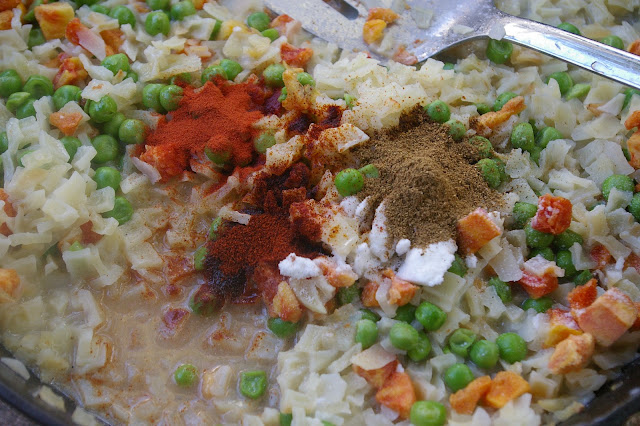Pad Thai works surprising well as a backpacking food. It is relatively simple and not that time consuming. Just slightly more complicated than: Cook noodles, add sauce. Traditionally Pad Thai has tamarind paste and lime, giving it a tartness that melds well with the salty fish sauce and sweetness of sugar. Though I did find some obscure sources online for tamarind powder I felt that I should use an ingredient that was more readily available. I used tomato powder instead. Instead of lime juice I used "True Lemon" powder. They make a "True Lime" too, but I already had the lemon. It worked fine. Though it smells like powdered lemonade on its own, once mixed into the sauce and cooked, it melds with the other flavous quite well.
2 Tb Vegetable Oil
1/3 cup Dried Shrimp
3 Tb Roasted Peanuts
the egg:
2 Tb Egg Powder
4 Tb Water
the sause:
1/4 tsp Chili Powder
1/4 tsp Garlic Powder
1 tsp Dried Onion
1 tsp Tomato Powder
1 Tb Freeze Dried Tomato Chunks (or an extra 1/4 tsp tomato powder)
1 Tb Brown Sugar
1 Tb Fish Sause
2 Tb Water
1 Package True Lemon (Just under a 1/4 tsp)
the noodles:
1/2 a 14 oz package of Rice Noodles (I used Thai Kitchen brand.)
1.5 Liters Water
the tofu:
1 tsp Fish Sauce
1/4 tsp Soy Sause
1/4 cup Water
1 piece Dried Tofu
2 tsp Vegetable Oil
In my last post on cooking Aloo Mattar, I experimented for the first time with using dried tofu. The results were questionable. The tofu soaked up most of the Aloo Mattar's suace and had a texture similar to a sponge. Near the end of the post I said I would try it again: soaking the tofu with its own sauce and then panfrying it. I gave this a try for this post and the end result was very tasty. Though it has a texture slightly different than fresh tofu that had been fried, it is not unpleasant in any way. If you would like more than one piece of tofu, feel free to add one or two additional pieces with a equivalent amount of additional fish sauce, soy sauce, water and oil. Depending on your pan size you may be able to fry all three pieces at once.
First make the tofu's sauce by adding the soy sauce, fish sauce and water. Place the tofu into the sauce and allow it to soak all of it up.
Fry the tofu on a medium-low to medium heat until it is browned on all sides. Because the tofu is so firm and square shaped, it is possible to stand the tofu on its four short sides fry them as well.
Cut up the tofu and set aside for later.
Bring the water for cooking the noodles to a boil. I heated mine with an MSR reactor as it gets the job done quick.
When the water boils remove it from the heat and add in the rice noodles. Let them soak in the hot water for 8 minutes. Drain off the water using the lid of your pot to keep the noodles from escaping. The water just has a little flavor and nutrients from the rice and can be used in another dish, to make a hot drink or refill a water bottle.
While the water is coming to a boil and noodles are soaking, you can make the Pad Thai sauce and reconstitute the egg. Combine the egg powder and the 4 Tb water and mix thoroughly. Set this aside for later. In another camp bowl or cup mix all of the Pad Thai sauce ingredients together and set aside for later.
Heat the 2 Tb of oil in your frying pan. When the oil is hot, add the rice noodles and stir fry them for a minute or two on medium-low to medium heat.
Scoot the noodles to one side of the pan and add in the reconstituted egg. Scramble the egg.
When the egg is cooked mix it into the noodles.
Stir in the tofu and the peanuts and remove from heat.
This backcountry Pad Thai is incredibly tasty. Enjoy!




















































